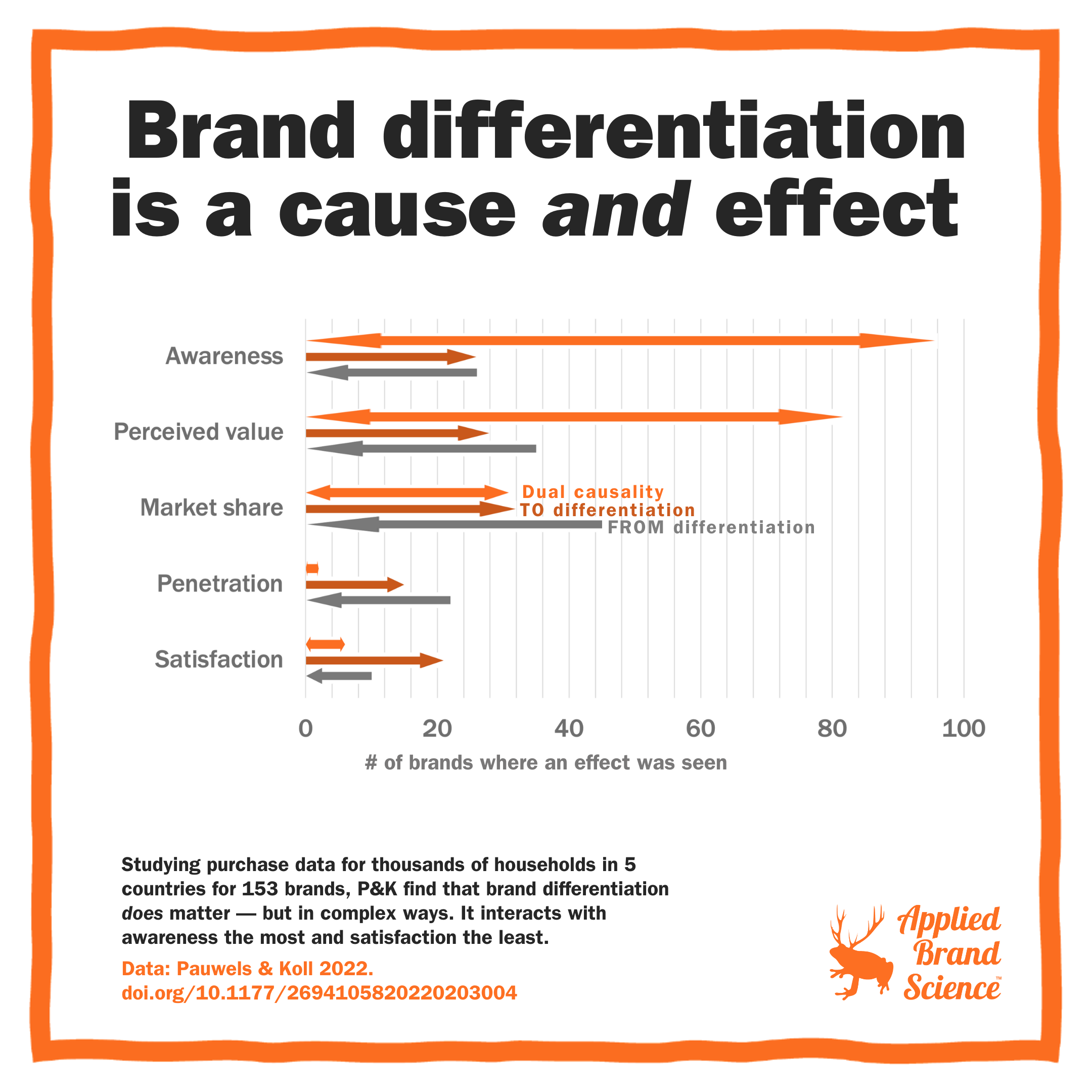How does brand differentiation affect your business?
For decades, the orthodoxy in marketing has been that to compete, brands need to differentiate: offer different things, or in different ways, or for different people.
Recently, the Ehrenberg-Bass Institute has asserted — quite strongly — that brands are generally interchangeable, and that differentiation doesn’t really matter.
We won’t settle the debate here. But we CAN shed some light on it.
Pauwels and Koll did a lovely bit of analysis of grocery shopper data from around the world: thousands of households, 5 countries, 153 brands. Countries were both emerging & mature economies, and brands ranged from growing to stable to declining.
They looked at the interaction of six big variables: market share, household penetration, brand awareness, perceived value, customer satisfaction, and perceived differentiation. The last was the percentage of folks who said the brand “offers something that other brands do not.”
They found that brand differentiation does matter — but in complex ways. It interacts with awareness & perceived value quite a lot — but the impact goes both ways. It’s the same with market share, but the interactions are seen in fewer brands. And penetration and satisfaction seem to interact with differentiation the least. (However, differentiation is the biggest driver of both of those variables.)
F’rinstance, perceived differentiation can be impacted by changes in market share. But it can also drive market share.
(Read the whole paper. It’s very cool.)
Soooo what does it all mean?
🔶Differentiation isn’t meaningless. It has real business impacts and can drive penetration, market share, and other things.
🔶Causality is harrrrrd. And things can be both cause & effect.
🔶Work with experts to analyze your own data.

